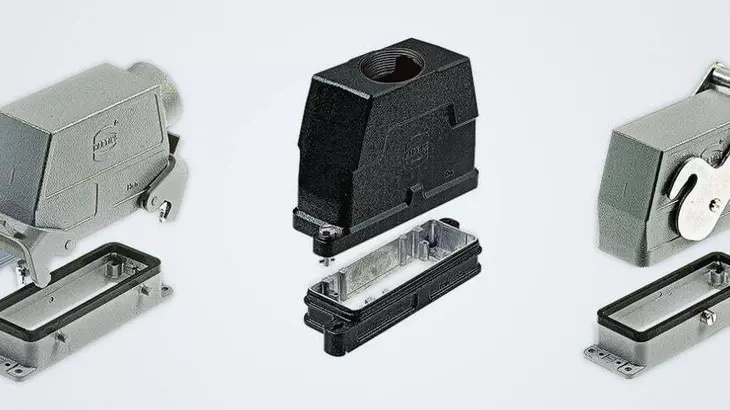Knowledge about high current connectors
What are high current connectors?
High current connectors (HC connectors) are interfaces that have been specially developed for the transmission of high currents. They therefore replace previous hardwiring and are used, for example, in transportation technology as well as in power generation and distribution.
What types of high current connectors are there?
The design of the high current connectors depends on the maximum current, the voltage for which they are designed and the environmental requirements. The smallest high current contacts in the HARTING portfolio transmit 70 A and are inserted in a Han-Modular® module. The most powerful contacts can be placed in housings from the Han® HPR HPTC and HPR Single Pole series, that are relevant for outdoor use. These connectors transmit up to 850 A individually in duet up to 1400 A (HPR HPTC 1400); the upper voltage limit is currently 4.5 kV.
The customer can choose between axial screw and crimp termination techniques. Screw connections or cable lugs may be required on the device side. The housing and contacts – straight or angled – are made of plastic or die-cast aluminium. The metal version is particularly recommended if good shielding is required.
How do high current connectors work?
Pluggable connections base on two elements: male and female contacts. These are shaped and the material is selected in such a way that the current is transmitted with as little resistance as possible when connector sides are mated. The male or female contact is located on the side of the device; the counterpart is attached to the end of the cable, which is usually rather heavy.
Connectors thus speed up the construction and integration of transport technology, machines or energy systems, for example. Larger systems can be subdivided into smaller units in advance so that the components, their connections and arrangements can be optimally prepared under workshop conditions – thus, the assembly on site proceeds all the faster.
In a connector, the insulation body, housing and interlocks protect the contact point from external mechanical influences such as impact, foreign bodies, dust, accidental contact, ingress of moisture, water or other liquids such as cleaning agents, coolants, oils, etc.
The designers of the device or system must select the conductor cross-sections according to the level of current to be transmitted. The cross-section of the HARTING Portfolio contacts ranges up to a maximum of 240 mm². The contacts are inserted into insulating bodies that make them safe to touch and protect the operator.
Who uses high current connectors?
Manufacturers of transport technology use HC connectors at wagon junctions for the couplable distribution of electrical power between the locomotive and the first wagon, as well as from wagon to wagon. Powerful components such as transformers or drives also need to be supplied with power, signals and data and integrated into the train infrastructure.
Other typical users are the operators of regenerative and other energy systems. Han® HC connectors can transport voltages of up to 4.5 kV. Market observers at HARTING have noticed that in energy distribution up to a level of 6 kV, connectors are increasingly in demand for applications where before hardwiring used to be standard.
What are the advantages of high current connectors?
Connectors help to speed up the installation of transportation technology and energy infrastructure. Connectors speed things up because they enable more pre-installation, make processes more repeatable and thus ensure quality. They also speed up installation on site – compared to hardwiring. In many cases, it may no longer be necessary to employ electricians on-site. This can make installation more cost-effective.
What do I need to consider when selecting a high current connector?
When selecting high current connectors, it is important to correctly determine the conductor cross-sections of the cables to be used. The required IP protection should then be determined in accordance with the future operating environment. The manufacturer or supplier should be able to provide evidence of the temperature resistance of their connectors, and the limits should match the expected ambient temperatures. If frequent replacement (mating / unmating) of the component fitted with connectors is foreseeable, attention should be paid to the number of guaranteed mating cycles.


